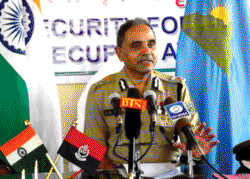Archives
Bangladesh - North East ultras’ Paradise
Observers and analysts have the perception that despite irrefutable evidence furnished to the Bangladesh government about the bases of North East extremist groups on its soil, Dhaka has been maintaining “steely denials.” Yet documents with BSF and intelligence agencies reveal that as many as 15 North East rebel outfits have their bases or camps across Bangladesh which are spread over all the 66 districts.
S.N. Tiwari, IG Cachar- Mizoram Frontline while talking to the media persons on the 44th Raising Day of the Force recently said that during the Indo-Bangladesh coordination meeting in Dhaka this year, the list of 110 camps of Indian insurgent groups was handed over to the Bangladesh side. Last year, according to him, the number of such camps was 141. This indicates, he pointed out, that some of the underground camps have been destroyed or shifted due to selective action by Bangladesh security forces.
“However Bangladeshi authorities maintain their official stand that Bangladesh does not allow its territory to be used for any prejudicial activity against any other country”, Tiwari pointed out. Interestingly, in 2003, intelligence wings have identified 196 camps of North East militants. The dwindling number is attributed to the growing disillusionment among the rank and file of various groups. Ulfa is a glaring example of it.
Of the existing 110 camps or bases of underground rebels, the maximum number belongs to National Liberation Front of Tripura (Biswamohan), according to the available documents, followed by United Liberation Front of Asom, All Tripura Tiger Force, National Democratic Front of Bodoland, People’s Liberation Army, National Socialist Council of Nagaland (IM), Muslim United Liberation Tiger of Asom, Hynnewtrep National Liberation Council, Kanglei Yawal Kamba Lum, Islamic United Reformation Protest of India, People’s Revolutionary Party of Kangleipak, United National Liberation Front and Kongleipak Communist Party.
The camps of these extremists groups are spread over almost all the 66 districts of Bangladesh. A matter of concern is their reported nexus with Director General of Field Forces Intelligence, known for its coordination with ISI of Pakistan, terrorist outfits like Jammat-ul-Mujahideen and Harkat-ul-Jihadi-al-Islam.
Jyoti Lal Chowdhury

